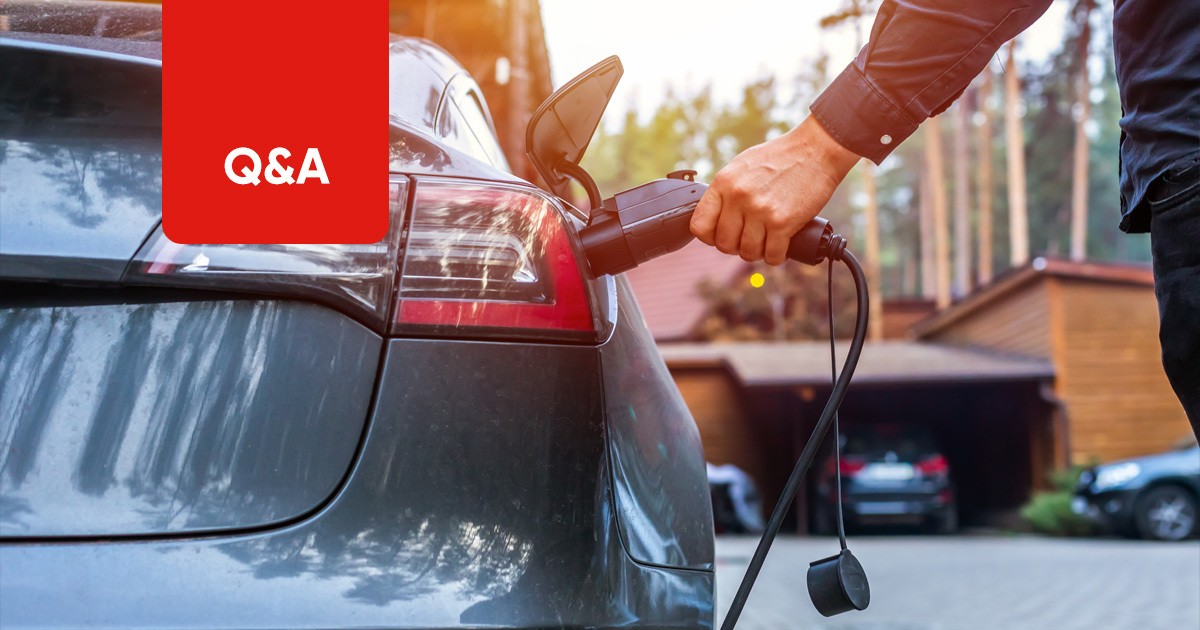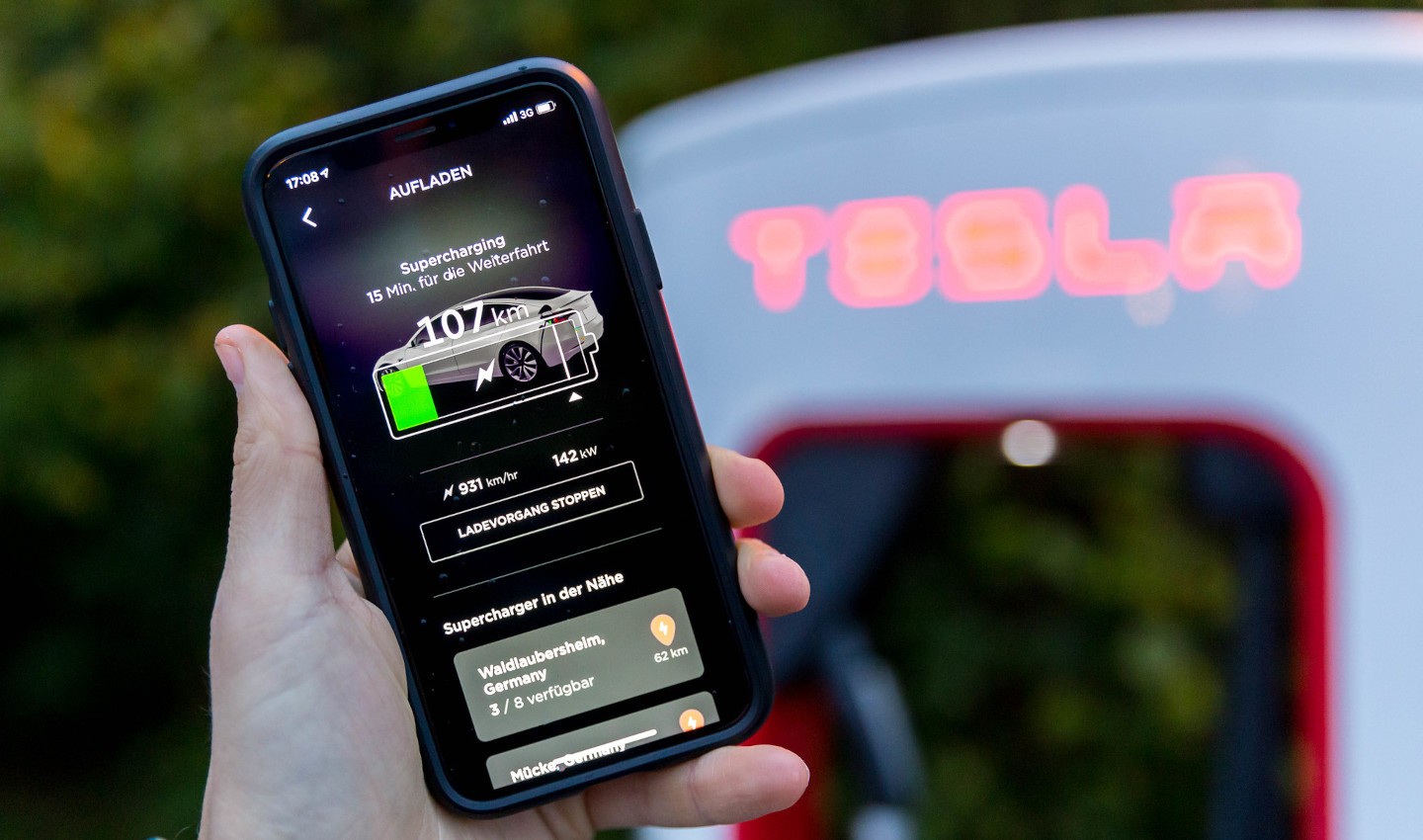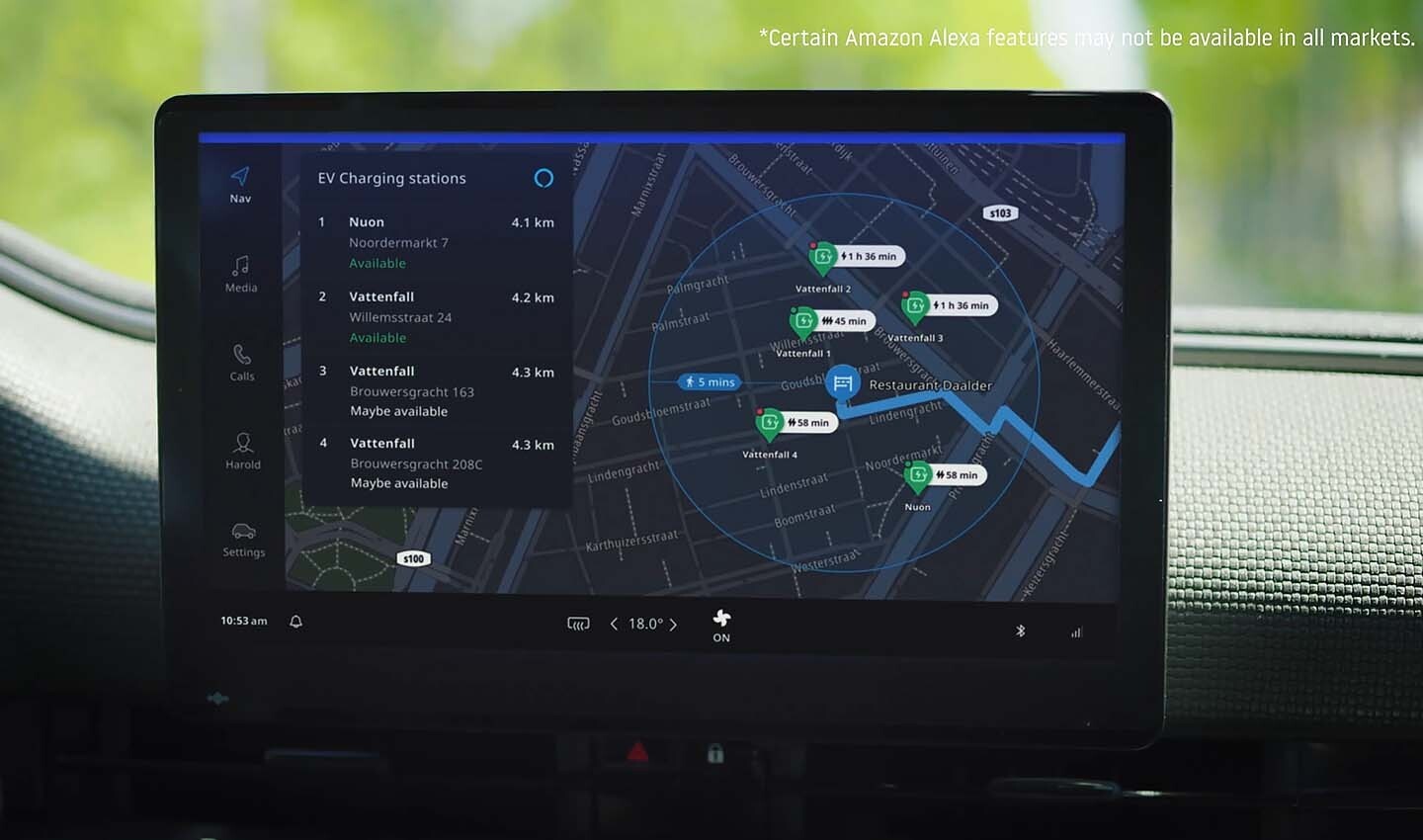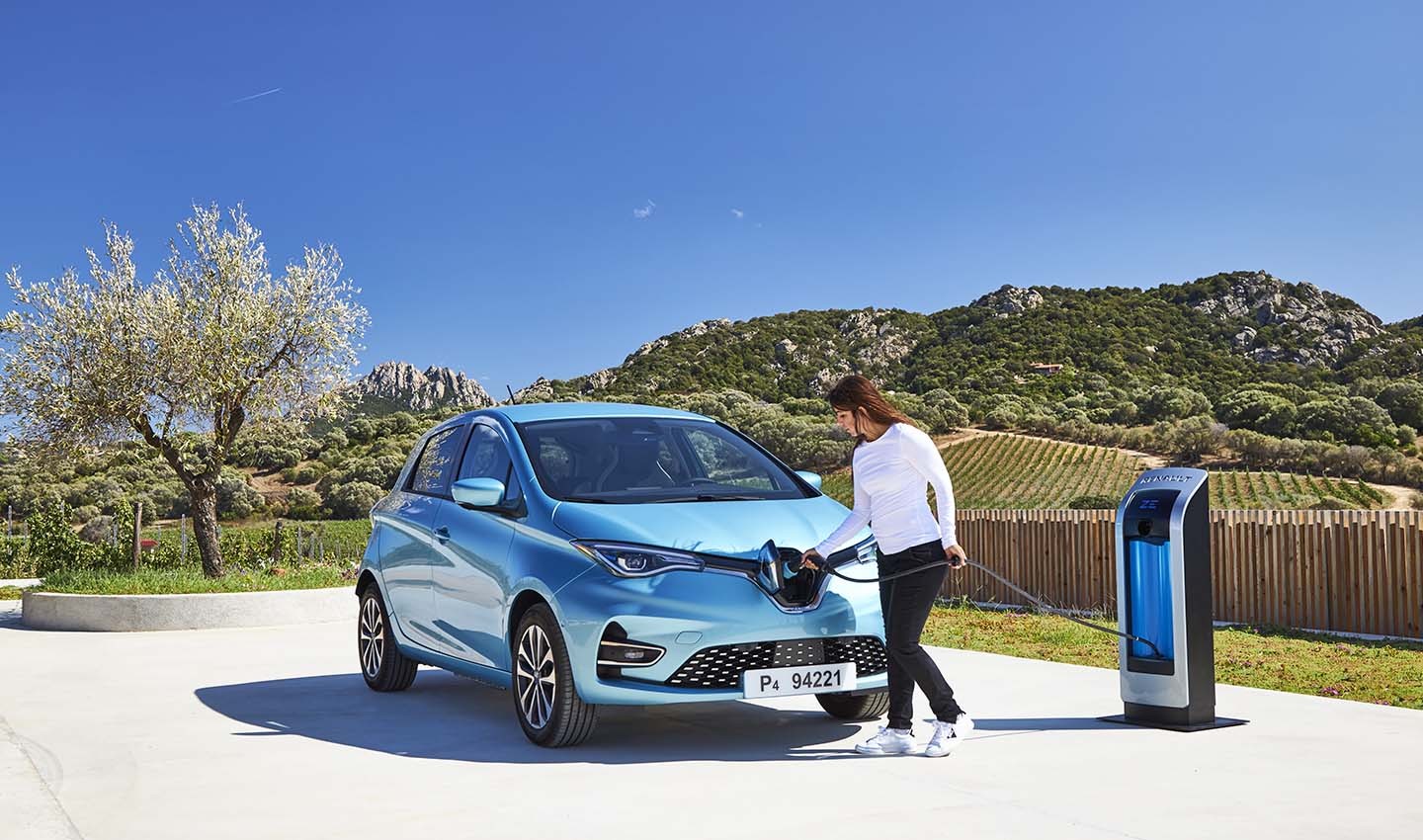Q&A: How is TomTom helping fix the pains of the EV industry?
&w=256&q=90)

Over the past few weeks, we’ve interviewed TomTom’ers who are working on the future of mapping and location tech. We’ve spoken with the technically minded, the future oriented and the community focused. Most recently, we talked to one of TomTom’s EV experts. It might surprise you to find out that TomTom is so invested in the world of EV, but, as we learned, location data and digital maps are going to play a central role in the transition to cleaner transport.
Electric vehicles are a certain part of our future. Car companies are launching new models and reimagining old ones with electric power. There’s even a growing industry of startup carmakers that are focusing on EV and demonstrating a new approach to vehicle design. For a lot of us, it’s refreshing to see. However, this electrification isn’t without its challenges. And regardless of if you’re a well-established car brand that sells millions of units a year, or an upstart EV name that’s yet to put its first consumer vehicle on the roads, the hurdles to overcome are the same. While big strides have been made and even though EVs have been gaining public attention for over a decade, the industry is still figuring a lot of things out. It’s a long way from the maturity we see in the combustion engine world. It might all sound like an uphill struggle but the move to EV is steeped in opportunity. And the transition is being driven not just by old and new carmakers, but by tech companies, like TomTom. The transition to EV will be more reliant on location data and digital maps than combustion vehicles ever were, and user experiences will evolve as a result. Here’s what we found out when we talked to one of TomTom’s experts about electric vehicles and what lies ahead as we transition to zero tailpipe emission power. Read on for the whole interview.The interview
TomTom Editorial: Who are you and what do you do? What does your job involve?Drew Meehan: I’m Drew Meehan. I’m the Senior Product Manager for our EV value stream.
That means I'm responsible for making sure that our EV products come together as one. We have lots of EV products — EV is not one monolithic thing. It's made up of lots of different products that, when put together, create an end-to-end experience. My job is guiding the creation of that end-to-end experience. I’m not responsible for any single product, I don't even have my own product team. In fact, I only work with other product teams. I'm very much the coordinator of the EV strategy. I’m constantly asking and answering the question of whether our EV products are working towards that strategy; that's kind of my role. TTE: How did you find your way to that position?
TTE: How did you find your way to that position? DM: Before I became the Product Manager for EV in October 2022, I was a Senior Principal UX designer. I was a designer, I've been a designer my whole life, my whole career — 25 years or so before stepping over into product management.
For almost 10 years before TomTom, about eight or nine years before TomTom, I was a design strategist and user experience researcher and consultant. Design strategist really means that I would do user research and then create [UX design] strategy for OEMs, mostly. For me, that's important because I'm still focused on user problems. To me, my work is all about creating a product that solves user problems. Even though I'm not designing it explicitly anymore, I'm trying to build products that solve customer pain points and solve user problems— I use that as the motivation for why we do what we do. TTE: TomTom has a unique role to play in the global transition to electric vehicles, tell us about that.DM: When it comes to maps and navigation, we’re [TomTom] one of the world's best — we have a long history of all kinds of navigation tech, especially in-car navigation. But EV presents a new problem, which, at the moment, is rooted in the unevenness of infrastructure and the current fragmented supplier/value chain.
There are lots of different players in EV products and services. So, it's not as simple and straightforward as just directing someone to a fuel pump, with a map and navigation. In an EV, you can't just go anywhere and find a gas station and two minutes later be done. There are also lots of variables like payment and charger compatibility that need to be considered. It's hugely complex and there are lots of new companies that didn't exist in more traditional automotive value chains. Now, we see fragmentation [of EV services] creating a lot of pain and a lot of trouble for drivers. They must do a lot of work themselves; a lot of research. Drivers have to know where they're going, they have to think a lot about it and use lots of apps and planning tools. At TomTom, we’re enabling a better experience. We can work with our OEM partners — we already have OEM partnerships benefitting from this — to help them bring their experience to their customers and reduce the fragmentation in the industry. Some EV drivers have it slightly better than others. However, the majority must use a lot of different apps to find charging stations and pay for their charging sessions. Credit: Marco Verch, Flickr.Thanks to our [TomTom’s] maps and location data, we already have a strong starting point — we're using traffic and map data and lots of sources for POIs and things like that already. We’re already connecting many variables about the world to make it easier for people to find their way. But now, we need to use this to make specialist EV products and navigation for OEM customers rather than just conventional navigation. The next logical extension is EV. We have all the parts of the puzzle already in place to create better EV experiences, we just need to put it all together.TTE: You’re alluding to some of the challenges that TomTom faces in this area. What mountains do we still have to climb in the world of EV?
Some EV drivers have it slightly better than others. However, the majority must use a lot of different apps to find charging stations and pay for their charging sessions. Credit: Marco Verch, Flickr.Thanks to our [TomTom’s] maps and location data, we already have a strong starting point — we're using traffic and map data and lots of sources for POIs and things like that already. We’re already connecting many variables about the world to make it easier for people to find their way. But now, we need to use this to make specialist EV products and navigation for OEM customers rather than just conventional navigation. The next logical extension is EV. We have all the parts of the puzzle already in place to create better EV experiences, we just need to put it all together.TTE: You’re alluding to some of the challenges that TomTom faces in this area. What mountains do we still have to climb in the world of EV? DM: One of our biggest challenges is the data itself, and that manifests in a couple of ways, charging anxiety and range anxiety.
When it comes to reducing charging anxiety, we see the real problem right now is the chargers. The infrastructure is very uneven around the world, and even where it’s good, data about charger status is still inconsistent and often hard to trust. In many places, it’s cheaper to install chargers than maintain them. So, we’re getting good growth in installations, but the maintenance is lacking. Drivers are spending lots of time at chargers that don’t work, stressed, trying to figure them out. Charging anxiety these days isn’t about finding a charger, it’s whether it works when you get there. In the Netherlands, it’s easy, there are chargers everywhere. But in a lot of other places that’s not true. In places like Italy and the United States, chargers are a long way apart. EV drivers are really reliant on the infrastructure to work. EV chargers are notoriously unreliable, they break a lot, require a lot of maintenance and there’s a lot of downtime. Broken EV chargers cost drivers time and create a whole lot of stress. In the worst cases, drivers might be stranded.We're trying to, as much as possible, eliminate those factors so that you can trust the data in your car. You can trust that if you see there's a charging station in your navigation system, you'll be able to stop there. And that if we say it's working, it really is working. The other challenge is range anxiety. But I don’t mean the anxiety of driving a car with limited range, but the range estimation in the car being inaccurate. We’ve got plenty of EVs that have more than enough range now, but it’s still anxiety inducing if your car tells you that you have 150 miles of range left but then only delivers 100. There are many variables that affect the range of an EV — road gradient, temperature, driving style, weather and so on. So, for this, we have a comprehensive and dynamic consumption model that takes as many of these variables into account as possible. There are still other challenges like pricing and payment. The fragmentation in the supplier/value chain creates huge variability in pricing across chargers, which is hard to keep tabs of and present to drivers in their cars. TTE: What are you and TomTom doing to address these challenges?
Broken EV chargers cost drivers time and create a whole lot of stress. In the worst cases, drivers might be stranded.We're trying to, as much as possible, eliminate those factors so that you can trust the data in your car. You can trust that if you see there's a charging station in your navigation system, you'll be able to stop there. And that if we say it's working, it really is working. The other challenge is range anxiety. But I don’t mean the anxiety of driving a car with limited range, but the range estimation in the car being inaccurate. We’ve got plenty of EVs that have more than enough range now, but it’s still anxiety inducing if your car tells you that you have 150 miles of range left but then only delivers 100. There are many variables that affect the range of an EV — road gradient, temperature, driving style, weather and so on. So, for this, we have a comprehensive and dynamic consumption model that takes as many of these variables into account as possible. There are still other challenges like pricing and payment. The fragmentation in the supplier/value chain creates huge variability in pricing across chargers, which is hard to keep tabs of and present to drivers in their cars. TTE: What are you and TomTom doing to address these challenges? DM: Ultimately, it’s about making data make more sense, then using that data effectively and showing off its value.
On the charging challenge, we’re trying to educate and work with charge point operators, the companies that install them, to show them the value good data creates. And to show them what we need to give drivers great EV driving experiences. But we’re also building more collaborative and reciprocal relationships with them. Let’s say we spot a problem with their data that we rectify. We want to be able to share that and feedback to them to improve that data, permanently, for everyone. And then that improves the whole world of EV charging. We’re also taking the world of EV charging data, validating it and consolidating it into one unified source. We have manysources of data with lots of different information, sometimes they overlap, sometimes one source has data that another source lacks. If we were to rely on one source, we’d often lack crucial information about chargers, their state and so on. We’ve developed automated rules that bring all this data together, combining all this gives us a fuller picture of reality and gives the driver the richest, maximum amount of utility. Drivers shouldn't have to use a bunch of different apps just to charge their car. Their car shold do more for them. Image for illustration purposes, TomTom Digital Cockpit.When it comes to range calculations, we still rely on data, but in a slightly different way. In this case, we’re working with our maps, geospatial data, location data and car data to accurately tell drivers how far they can go before they need to charge. When EVs are too hot or too cold for example, they lose range faster than in optimal conditions. When they drive up hills, they lose range faster than driving on the flat or downhill. When using regenerative braking an EV can even add range, that kind of thing was never possible in an ICE car. So old fashioned distance-per-energy-of-unit-used range calculations don’t work. Rather than calculating range as the crow flies and displaying a circular range on a map, we consider the specific road, its characteristics and the car’s state to display an accurate range suggestion that’s tailored to every direction you could travel in. Imagine if heading west sent you up a mountain but heading east sent you down it. The range in each of those directions will be different, drivers need this accurately and easily displayed to them for a great EV experience. To address range and charging anxiety requires a different approach to route planning too. For an EV, the best possible route isn’t necessarily the way everyone else is doing it, or the way we’ve done it for ICE cars — where we would tend to stick to the fastest route and then just pick the closest chargers/filling stations to that and say ‘charge here.’ For EV routing, we consider the charger itself, how fast it charges, the charging curve of the vehicle, the expected state of charge at arrival time and so on. This allows us to maximize how quickly an EV driver can get to their destination and ensure the trip is as easy and stress free as possible.
Drivers shouldn't have to use a bunch of different apps just to charge their car. Their car shold do more for them. Image for illustration purposes, TomTom Digital Cockpit.When it comes to range calculations, we still rely on data, but in a slightly different way. In this case, we’re working with our maps, geospatial data, location data and car data to accurately tell drivers how far they can go before they need to charge. When EVs are too hot or too cold for example, they lose range faster than in optimal conditions. When they drive up hills, they lose range faster than driving on the flat or downhill. When using regenerative braking an EV can even add range, that kind of thing was never possible in an ICE car. So old fashioned distance-per-energy-of-unit-used range calculations don’t work. Rather than calculating range as the crow flies and displaying a circular range on a map, we consider the specific road, its characteristics and the car’s state to display an accurate range suggestion that’s tailored to every direction you could travel in. Imagine if heading west sent you up a mountain but heading east sent you down it. The range in each of those directions will be different, drivers need this accurately and easily displayed to them for a great EV experience. To address range and charging anxiety requires a different approach to route planning too. For an EV, the best possible route isn’t necessarily the way everyone else is doing it, or the way we’ve done it for ICE cars — where we would tend to stick to the fastest route and then just pick the closest chargers/filling stations to that and say ‘charge here.’ For EV routing, we consider the charger itself, how fast it charges, the charging curve of the vehicle, the expected state of charge at arrival time and so on. This allows us to maximize how quickly an EV driver can get to their destination and ensure the trip is as easy and stress free as possible.Want to learn more about how UX design is helping the transition to EV?
Read our article:
UX design: The unsung hero of great EV experiences
DM: I think the reason why location data is so important for EVs comes back to that uneven infrastructure. Using maps and location data, we can connect disparate parties and platforms and smooth the whole thing out and make it much more connected.
If, as a driver, you rely on knowing that you can stop somewhere, you need data to show you where to go and stop. Our EV routing would do that automatically, with great accuracy. If the data is not accurate though, or perhaps doesn’t flag that the charger is broken, or is on private property, that becomes a big problem. The other part, alongside this map component, is the location data itself. This is where TomTom has a really unique solution and opportunity, one that not many other players in this industry have. We can combine our map and location data with car data — as I said before this can help us solve a number of problems, especially range calculations. Adding this kind of real-time integrated car data as a layer of data to a map, takes that map from being a tool to help someone get from a to be, to being a device that keeps drivers relaxed, on schedule and in control of their trip. TTE: You’ve alluded to some of the EV products and services TomTom is working on. Take me through these and what the near future holds for them.DM: If we look out five years, our customers project that 80% of their vehicle output will be electrified. That equates to millions of vehicles over the next five years! So, without a doubt, our EV products and services are going to go from being a niche thing, to being one of the main things we offer, with potentially global reach.
And that’s something else we’re looking at: geographical expansion. We’re looking at Southeast Asia, India, Central America, South America. These are places where EVs are starting to pick up, but are at the start of their journey and are a way behind Europe and North America. We’ll probably experience something different there. Like with smartphones, most of these parts of the world jumped over a step — going from basic mobile phone to smartphone, missing out the feature phone moment in between. They went straight to the most modern phones that we did, at the same time. So, we have these new markets, where there is huge opportunity to get it right from the start. We need to make sure that our maps and the data we use from those places is as accurate as everywhere else. The problems don’t change when you enter a new market just because it’s new or it might have a historically different relationship with EVs or cars in general. As TomTom’s new Orbis Maps grows, and as its maps become more detailed and more accurate, we’ll be in a great position to excel with this kind of EV product offering all over the world. We’ll be able to enter new geographies confidently knowing our map data is excellent. And we’ll be able to add a lot of value to the EV experience. We’re already working with our Maps team to find out those locations where there might be an EV charger at a point of interest or other amenities. That’s where things get really interesting for us, how can we use our strengths as a map maker and location data company to support the EV experience in as many ways as possible. With the new TomTom Orbis Maps, we’ll be more daring and expansive with how we offer EV services, products and routing, and how we enter entirely new regions. TTE: Could you explain what TomTom’s EV products are enabling in cars for drivers? What’s the goal for them?DM: All these products are enabling drivers to use their EV without stress. That’s the main thing. The backbone of our product being in your car means that you don’t need to worry that it’s an EV. Hopefully people will see the TomTom name and know that their carmaker has taken the time to carefully choose, design and package its EV services to offer super accurate range calculations and EV-first routing.
Even if your car is electric, it’s just a car and it should act like one. That’s what we’re really trying to get to, the point where being an EV doesn’t create new or different problems, they’re simply solved by the car and the system we’ve put in it. It’s also about making EVs mainstream, lowering the barrier to entry, so you don’t have to worry about owning one. We want to surprise people with how easy it is when they go on test drives, we want to hear people say, “I didn’t even know it could do that! It just did it all by itself!” that’s the perfect scenario. But what I think is also important is that even though we call them “EV products” they’re not just another suite of products, they’re really something that’s helping dramatically change the world. It’s going to be an important step that we take towards a better future for all of us. For that we need to lower the thresholds and make it easier and more approachable for everyone to get on board with being part of this transition to EV. It’s not the only thing that needs to change for a better future, but it’s one of the big ones! TTE: It’s clear that we’re still in a transition phase. With all the talk of making EVs mainstream, what will the experience look like when it is commonplace? And, from that point, how will it evolve?DM: What we’re really trying to do is humanize the whole EV thing. At the moment, it’s all about solving base level problems, like not being able to find chargers or trust that they’ll work when you get there. Right now, we need a lot of apps to do these things and the car does relatively little when it should probably do more. It’s not very human friendly.
The next logical step is to make all this more convenient for people, in a way that maximizes efficiency, naturally. Maybe on your daily commute it doesn’t make sense to suggest chargers on route if you will be able to charge at home, so let’s not. Maybe you’re popping to the shops before a long trip, in that instance, it makes sense to find a convenient charger and top up your battery so it’s full for the long trip. Or maybe you don’t have a charger at home, so you have to make use of every charger you find at each opportunity. These kinds of things should be easily factored into daily EV driving. EV drivers should be allowed, and be able, to charge anywhere. Charging should fit into their life, they shouldn't have to fit their life around charging!Once we’ve got the basic functions down, these higher-level conveniences will be what’s next. But it’s always about maximizing convenience. We know that going EV will change the way people use cars, but what we also see is that we can evolve systems and tech to the point where drivers won’t ever need to think about charging at all. It should become such a natural thing to just plug in wherever you are! Whatever the case, it should work for you, the driver. We like to think of it as fitting charging around your life and not fitting your life around charging. This type of thinking, to take the effort out and to be more proactive about how the tech works, is what I see as fueling the next generation of the transition to electric vehicles. It’s coming too! We’re already working on a lot of the things I’ve mentioned, and we know they’re important to our customers and their drivers. We’re already getting great feedback from some of the world’s biggest and most exciting new EV carmakers. We’re already a long way along the road to EV being normal, but we’re not quite there yet.
EV drivers should be allowed, and be able, to charge anywhere. Charging should fit into their life, they shouldn't have to fit their life around charging!Once we’ve got the basic functions down, these higher-level conveniences will be what’s next. But it’s always about maximizing convenience. We know that going EV will change the way people use cars, but what we also see is that we can evolve systems and tech to the point where drivers won’t ever need to think about charging at all. It should become such a natural thing to just plug in wherever you are! Whatever the case, it should work for you, the driver. We like to think of it as fitting charging around your life and not fitting your life around charging. This type of thinking, to take the effort out and to be more proactive about how the tech works, is what I see as fueling the next generation of the transition to electric vehicles. It’s coming too! We’re already working on a lot of the things I’ve mentioned, and we know they’re important to our customers and their drivers. We’re already getting great feedback from some of the world’s biggest and most exciting new EV carmakers. We’re already a long way along the road to EV being normal, but we’re not quite there yet. [Editor's note: Answers and responses have been edited for clarity and brevity. Interview by Snigdha Bansal, Editing by Matthew Beedham.]
People also read
)
What are the six levels of autonomous driving?
)
Beyond EV range anxiety – keeping the e-mobility revolution rolling
)
EVs were outselling gas cars 100 years ago…what happened?
)
UX design: The unsung hero of great EV experiences
* Required field. By submitting your contact details to TomTom, you agree that we can contact you about marketing offers, newsletters, or to invite you to webinars and events. We could further personalize the content that you receive via cookies. You can unsubscribe at any time by the link included in our emails. Review our privacy policy.